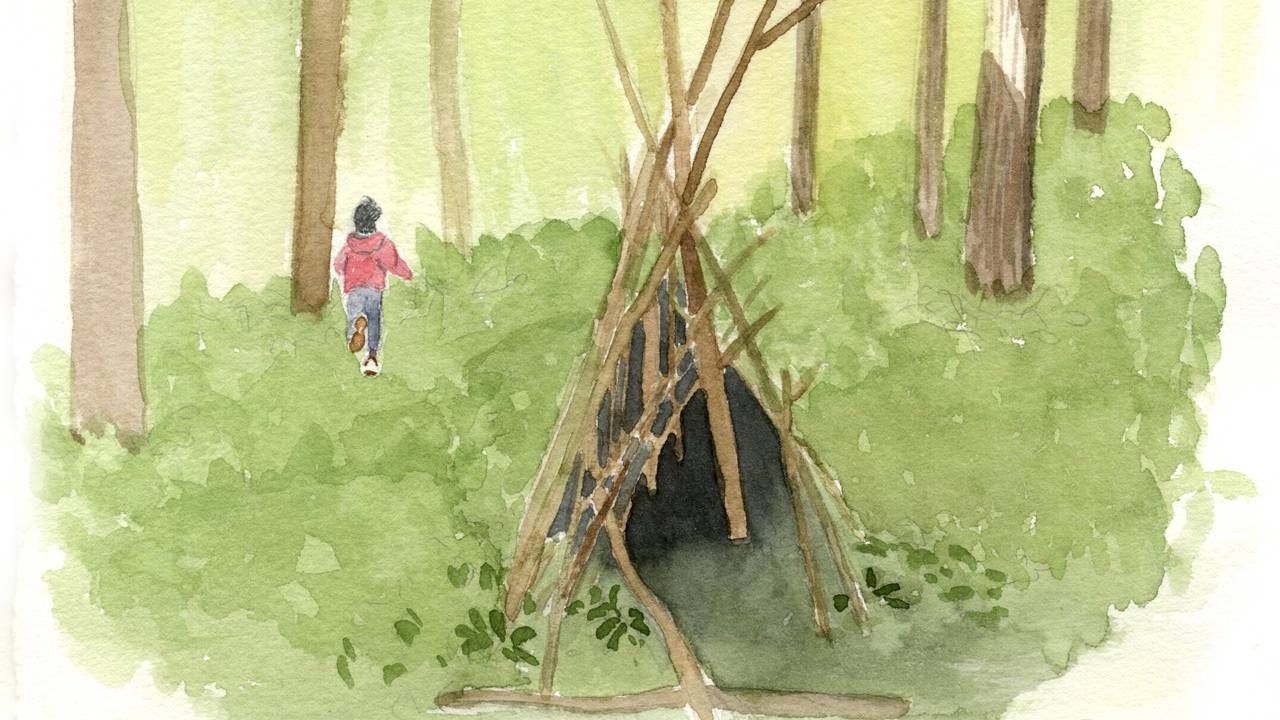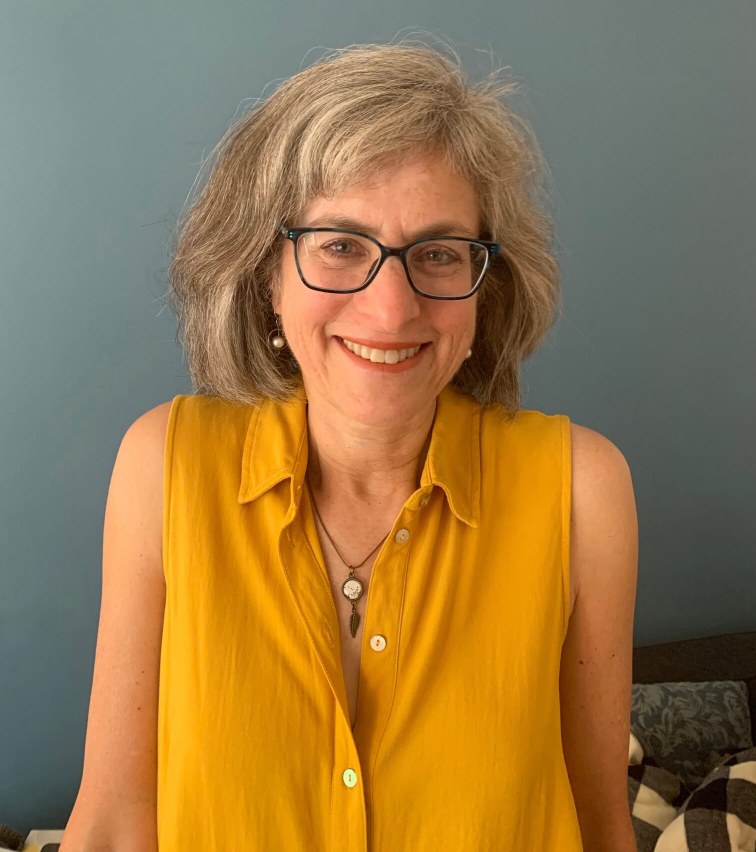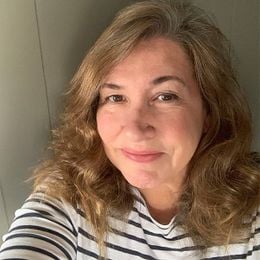A Poet and An Artist Find Shelter in a Pandemic Project
What began as an informal exchange of their art resulted in a book
"Accountability." This is the word poet Margaret Hasse and artist Sharon DeMark use to describe how each was able to thrive creatively during the pandemic, knowing that the other would be eagerly waiting to respond to what was coming next as the two traded poems and paintings over the course of several weeks.

When they began an artistic collaboration in April, solely as a means of finding inspiration and encouragement from one another during an anxious time, the only defined parameter that took root in their work was the theme – shelter – a word which has taken on a new kind of significance in 2020.
"We were talking about sheltering in place, looking around our houses and thinking we'd probably be here for an awfully long time," says Hasse, author of five poetry collections, winner of a Midwest Poetry Prize and a teaching artist in St. Paul, Minn.
"I was a little directionless and blown away by the winds of the pandemic. It was just the perfect time for us to find shelter and refuge in each other," she says.
As DeMark explains, "We were looking for a metaphorical shelter; the idea of a place that's protective."
The project first took form as a simple email exchange. "Once a week, I'd receive something from Sharon that was so beautiful, it would inspire me to sit down and write about it," says Hasse.
The words would come to her in dreams, reflections and on long walks through her neighborhood, she explains.
The project first took form as a simple email exchange.
Sometimes, Hasse's poems would come to DeMark first, and then she would respond with a painting. "We were both responding and instigating during the process," DeMark says.
DeMark, who also lives in St. Paul, works full-time for a philanthropic foundation and has been devoting more energy to her work as a watercolor artist since 2019 when she challenged herself to do one new painting each day. During that year, she presented two local art exhibits of her daily work.
The two women have known each other for many years, crossing paths in the field of art education and as friends, and DeMark says the timing was right for them to create art together.
"I'd been wanting to do a project like this, responding to the work of another artist," she says. "I was truly honored that Margaret wanted to do this with me because she's such an established and beautiful poet."
The pair didn't start out with the idea of creating something permanent. But after about eight exchanges of poems and paintings, and positive responses from a few who saw their work, Hasse says "it seemed like we had a book on our hands."
They approached Norton Stillman, of Nodin Press, who has published other books by Hasse, and he agreed the time was right for this meaningful topic.
"Shelter," a 70+ page book, released in late September, is the result. In the instances where the image is on the left, DeMark created the painting before Hasse wrote the poem; on the right side, their process was reversed.
Different Definitions of Shelter
Within the pages of the book, "shelter" is frequently defined traditionally, featuring poems titled "House," "Barn," "Porch" and "Playhouse," for instance.

Or "Nest," which for Hasse is the most biographical poem in the collection, in part: "That slim year we found the nest newly vacant/We'd watched two blue eggs become chicks now grown and gone toward their own lives/As our son had just fledged and flown/And the nest – a brown bowl within white veils of flowering bushes – still sturdy after the robins left…"
However, there are other poems about the different ways we may take shelter and refuge, which can be without shape, but still essential: "Hug," "Art" and "Book," to name a few.
In the case of "Book," the painting came first, depicting DeMark's now-grown son when he was a child reading one of the "Harry Potter" books.
"For me, reading and the idea of getting lost in a book seems like a kind of shelter," she says. "I'd never thought of it that way before, but it really does feel like a protective other world."
Embracing the Moment
Working on this project also helped stave off thoughts of the future and the unknown, according to DeMark.

"When I paint, I'm so focused on the present. During the pandemic, there's been so much future thinking. The present is ultimately all we have – when I'm present-focused, there is no anxiety," she says.
And there is also the past, a place of memory, says Hasse. "Our minds can take us back to a place where we felt safe," she explains.
At one of their Zoom readings for "Shelter," a participant shared a memory about a spot next to a warm radiator in her childhood home that was a type of shelter for her – a refuge away from her 12 siblings.
As the project unfolded, Hasse and DeMark said they spent time talking about the concept of shelter in another way.
"Ask yourselves what it is you feel creative about. What do you want to share with others?"
"We recognized we are both privileged to have a safe home during this time, and that's not the case for everybody. We wanted to recognize that," says DeMark.
For example, "Tent" tells of a young girl seeking shelter under a broken shopping cart covered with plastic; one of many voices used by Hasse in the poems.
Inspired by Collaboration
Since both women admit that Zoom meetings consume a lot of their days (for Hasse, it's teaching poetry to older adults, a writing group and a book club; for DeMark, it's work meetings), in addition to the email exchanges, the two took pleasure in their phone conversations as the book came together.

"We live a very short distance from each other in St. Paul, but we only saw each other twice during the entire time we worked on this project," says Hasse.
Now, they'll drop books off on each other's doorsteps for the other to sign. ("Shelter" is available at local independent booksellers as well as on Amazon.)
When asked what advice they'd offer others inspired by their collaboration to perhaps join with a friend (or even a group) to engage in artistic pursuits, both women shared some ideas.
"I think a mutual vision is important, rather than just being random about what you're going to do," says Hasse. "Ask yourselves what it is you feel creative about. What do you want to share with others?"
Having a starting place can make all the difference, says DeMark. "A blank sheet can be daunting. A little structure can be helpful."
A good relationship is also important. "If you find someone you care about, and you have a mutual interest, it can be so lovely," says Hasse, who found DeMark to be "so graceful, so receptive and so clear" in the work they did together on "Shelter."
"I loved bouncing ideas back and forth with Margaret," says DeMark. "She is so thoughtful and kind. It was just a joyous experience."


